Why Can’t Major Avengers Villain Kang Be in an Avengers Movie?
Here is the latest in a series of examinations into urban legends about movies and whether they are true or false. Click here to view an archive of the Movie urban legends featured so far.
MOVIE URBAN LEGEND: Marvel cannot use Kang, one of the biggest Avengers villains, in their Avengers films.
Very few things in the world of pop culture are quite as confusing as the matter of who controls the production rights of various Marvel Comics characters, since Marvel has parceled out the rights to their characters to so many different studios over the years that it can be extremely complicated figuring out who owns what character and when said studio got control of said character. We have already addressed a few of these confusing rights issues in the case of whether Deadpool was part of Fox’s X-Men rights or whether the Incredible Hulk’s movie rights are fully owned by Marvel Studios. Today, though, we delve into one of the most surprising characters whose rights are not controlled by Marvel Studios, and thus off-limits for the Avengers films
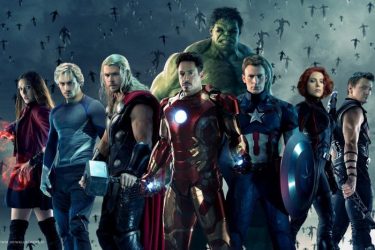
– one of the Avengers’ earliest and greatest foes, Kang!
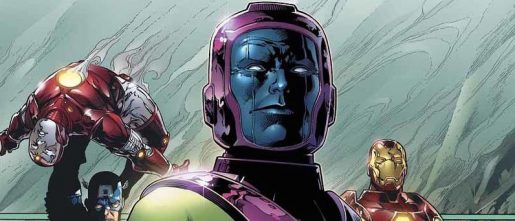
Read on to see why Kang is off-limits!
The issue at hand is that the production rights (that’s the rights that studios need to actually produce a movie about a particular character) in a lot of these contracts were noticeably vague, as they often said things like “Characters from X-Men comics,” so it leaves it up for debate exactly who owns the rights to, say, Scarlet Witch and Quicksilver, characters who debuted in the pages of X-Men (which Fox owns the rights to) but becoming Avengers characters for the majority of their existence in comics (which Marvel owns the rights to). In the case of Scarlet Witch and Quicksilver, Fox and Marvel had a bit of an issue with each other over both wanting to use Quicksilver in their then-upcoming movies (Avengers: Age of Ultron and X-Men: Days of Future Past), with the compromise being, as Marvel Studios head honcho Kevin Feige explained:
We both have [Quicksilver and the Scarlet Witch]. There’s a specific arrangement with those two characters that would allow us to use them with “Avengers,” but not discuss or reference their mutant or Magneto-related lineage. They can use them as mutants and as Magneto’s relatives, but cannot have anything to do with “The Avengers.”

Marvel has worked out a similar shared arrangement deal with Fox on the Kree (who debuted in the pages of Fantastic Four, but have had many notable Avengers stories, including, but not limited to, the famous Avengers epic the Kree/Skrull War), but often these things come down to a matter of “We get Q. You get R. We get S. You get T.” For instance, Marvel was denied access to the Badoon for Guardians of the Galaxy, who debuted in the pages of Silver Surfer, a character that Fox has control over.
Amazingly so, though, Kang the Conqueror’s rights also belong with Fox, despite the character debuting in the pages of Avengers and being a longtime Avenger foe. Guardians of the Galaxy director James Gunn broke the news on his Facebook page. So much of this is supposition, but the most likely theory is that Kang’s alter ego being Nathaniel Richards (relative of Reed Richards), plus the connections he has had with Fantastic Four villain Rama-Tut (Kang under an earlier identity) and Doctor Doom (Kang felt that he was a descendant of Doom) has led to Kang falling under the Fantastic Four rights. Again, these things are usually not advertised with any precise nature, so it’s unlikely that we will ever know for sure why Kang was determined to be under Fox control, except to note that, oddly enough, he is.
So sadly that means no Kang usage for future Avengers movies (unless the rights to the Fantastic Four get back to Marvel somehow, of course, like how Daredevil’s rights were at Fox for years but now are at Marvel).
The legend is…
STATUS: True
Thanks to James Gunn for the information!
Be sure to check out my archive of Movie Legends Revealed for more urban legends about the world of films. And click here for legends just about superhero films!
Feel free (heck, I implore you!) to write in with your suggestions for future installments! My e-mail address is bcronin@legendsrevealed.com.
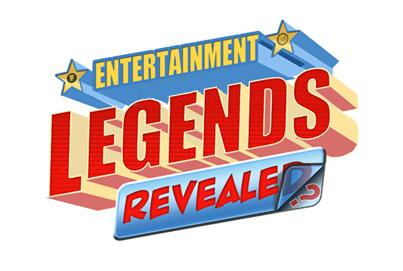

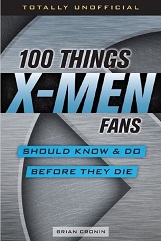
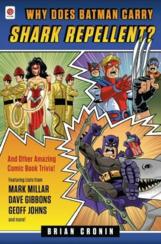


“Amazingly so, though, Kang the Conqueror’s rights also belong with Fox, despite the character debuting in the pages of Avengers”
On a technicality, I’d probably argue that this isn’t exactly true.
Yes, he debuts AS Kang in Avengers, but in his first appearance he explicitly SAYS he’s the same person as Rama-Tut, who had already showed up in the Fantastic Four about a year earlier. So Kang technically wasn’t a new character, just a new interpretation of one that had already been established (even if he went on to be far more meaningful and important as Kang than he ever was as Rama-Tut). Which would mean that Avengers #8 isn’t his first appearance – Fantastic Four #19 was.
In fact, that’s why I’ve always assumed Kang’s rights were tied to the FF. A lot of Marvel’s licensing deals seem to involve where a character first debuted rather than where they became most famous for purposes of determining which franchise they technically “belong” to (and thus, who has the rights to a given character), and that logic would put Kang squarely into Fox’s wheelhouse, in spite of him being far more of an Avengers villain. It’s why I’ve always sort of poo-poo’d the idea when people bring him up as a potential Avengers villain in discussions.
If anything, I was always more surprised by the fact that Marvel got to keep using the Kree (which should also be an FF property by debut-based logic), and it was the same reason why I assumed they used the Chitauri rather than the Skrulls in the Avengers movie (though it also seems like they went that route because the movie was basically a fusion of the original recipe and Ultimates versions of the team’s origin story).
So, this leads me back to a strange question I often have. Who owns the rights to ancillary characters from non-marvel produced marvel products. As an example, (and really the one I’m most interested in) The CBS Universal (Now NBC Universal) program The Incredible Hulk introduced some very interesting characters from Jack McGee to Li Sung, who seemed really viable for cross over interest in the Marvel Comics Universe. Are these characters exclusive properties of Universal? Did the Hulk Film rights deal allow them to cross over? Jack McGee as a young Journalism student gets a Cameo in the Ed Norton Incredible Hulk film, so presumably his movie rights at least are in the MCU, but what about his comic and character rights?
Along those lines, I’ve always wondered about the image rights for various characters, If Marvel could produce a Jack McGee comic book, would Jack Colvin’s estate receive some sort of royalty? What about the characters in Batman ’66 or Wonder Woman ’77 are Adam West or Lynda Carter receiving payments for that?
Did Elivra receive payment for her image in Elvira’s House of Mystery?
It’s not really a Legend I suppose, but still something I’d love to hear more about, especially if it means that buying a branded comic also helps out our favorite celebrities who are likely not as rich off their earlier work than we imagine.
My guess would be the rights to “original” characters in a licensed setting remain property of the licensee, not the licenser – unless specified otherwise in the contract ahead of time.
I know that was an issue with the “ethnic” characters (and the Wonder Twins) from the 70s Super Friends cartoon – Hanna-Barbera technically owns all of the characters invented for the show (which is why they could use Apache Chief, Black Vulcan, and Zan on Harvey Birdman, but not actual DC characters – and why the DCAU had to use ersatz versions of those characters in Justice League).
I’d assume it’s the same logic that comes into play with Marvel being able to use the Dire Wraiths (which were created for and first appeared in Rom: Spaceknight), in spite of not being able to use Rom (a character created by someone else).
Though (and I’m pretty sure this has come up before) the deal Marvel had with Hasbro for the GI Joe and Transformers comics was that Hasbro owned pretty much everything appearing for the first time in a Transformers or GI Joe comic, which is why Marvel had the character of Circuit Breaker show up in an issue of Secret Wars II before her technical debut in Transformers, so they could lock down the rights for her before using her as a character in their licensed book.
“Yes, he debuts AS Kang in Avengers, but in his first appearance he explicitly SAYS he’s the same person as Rama-Tut, who had already showed up in the Fantastic Four about a year earlier. So Kang technically wasn’t a new character, just a new interpretation of one that had already been established (even if he went on to be far more meaningful and important as Kang than he ever was as Rama-Tut). Which would mean that Avengers #8 isn’t his first appearance – Fantastic Four #19 was.”
The problem with this line of logic is you’re associating ownership with secret identity. The on-camera precedent we have says that’s wrong. Iron Patriot is Norman Osborn. Norman Osborn appears in Amazing Spider-Man #14 (or #38), which would make Iron Patriot Sony’s. Despite that, there was apparently zero controversy about Marvel using Iron Patriot in Iron Man 3. At the very least this implies that making Kang someone other than Nathanial Richards would let them use Kang, at most this would make Kang Marvel’s property for films.
“The problem with this line of logic is you’re associating ownership with secret identity.”
Not exactly. More just with “identity”, since Kang’s identity has always been implicitly the same as Rama-Tut. Whereas Norman Osborn spent years as a distinct entity apart from “Iron Patriot”. The former pairing is more intrinsic to the character than the latter. Besides which…
—
“The on-camera precedent we have says that’s wrong. Iron Patriot is Norman Osborn. Norman Osborn appears in Amazing Spider-Man #14 (or #38), which would make Iron Patriot Sony’s.”
The problem there is that the character is technically a hybrid, since the fact that he’s wearing Iron Man’s armor would tie him to Iron Man rights. If anything, that would imply that neither one would be able to use him as he appears in the comics, because neither would have full rights.
But the other tricky bit there is that Sony has a history of being willing to give Marvel a bit of leeway when it comes to rights issues (which is part of why Marvel’s willing to do the shared rights thing with Spider-Man in the Avengers and Marvel helping Sony produce their next Spider-Man movie). So even if there WAS potential for conflict there, Sony could easily say “Ehh, yeah, we don’t care, go for it.” Whereas Fox has always seemed a bit more standoffish with Marvel every time rights issues come into play (see also, the Mutant X TV show, and the petty back and forth involving Quicksilver being in movies by both studios).
—
“At the very least this implies that making Kang someone other than Nathanial Richards would let them use Kang”
Arguably not, if original Kang’s origin story (where he blatantly ties himself to the preexisting character) locks him into Fantastic Four rights. In the same way that Marvel couldn’t have an entirely new character debut in an issue of Daredevil who calls himself the Green Goblin, and whose concept is tied to the original’s, yet treat them as a distinct separate entity.
It might be different if Kang had originally showed up as a separate character and was later retconned into being Rama-Tut, but as-is it would be too easy to argue that they’re the same character if a dispute ever went to court (though these days Fox might be less willing to risk going up against Disney lawyers).
The only thing that makes it murky at all is the fact that other people HAVE worn Kang’s armor and called themselves Kang (a lot of them, in fact, in the Council of Cross-Time Kangs storyline in The Avengers), but they were also so strongly derivative of the original it would probably be a case where they’d still be tied to the original’s rights, and not count as a separate entity.